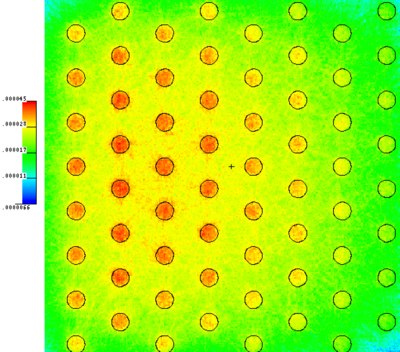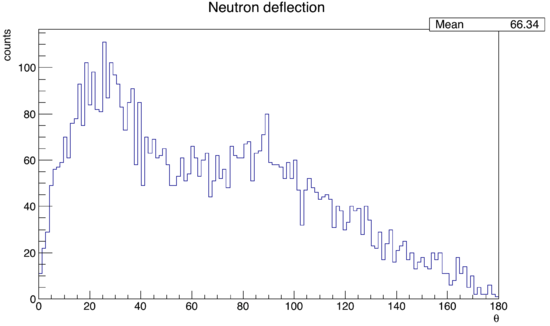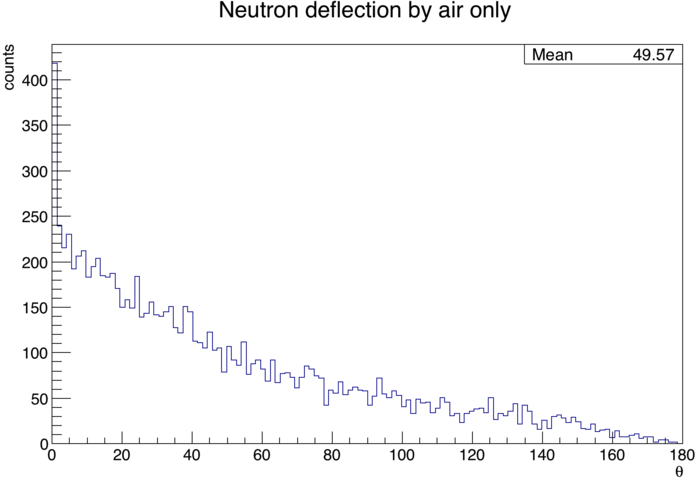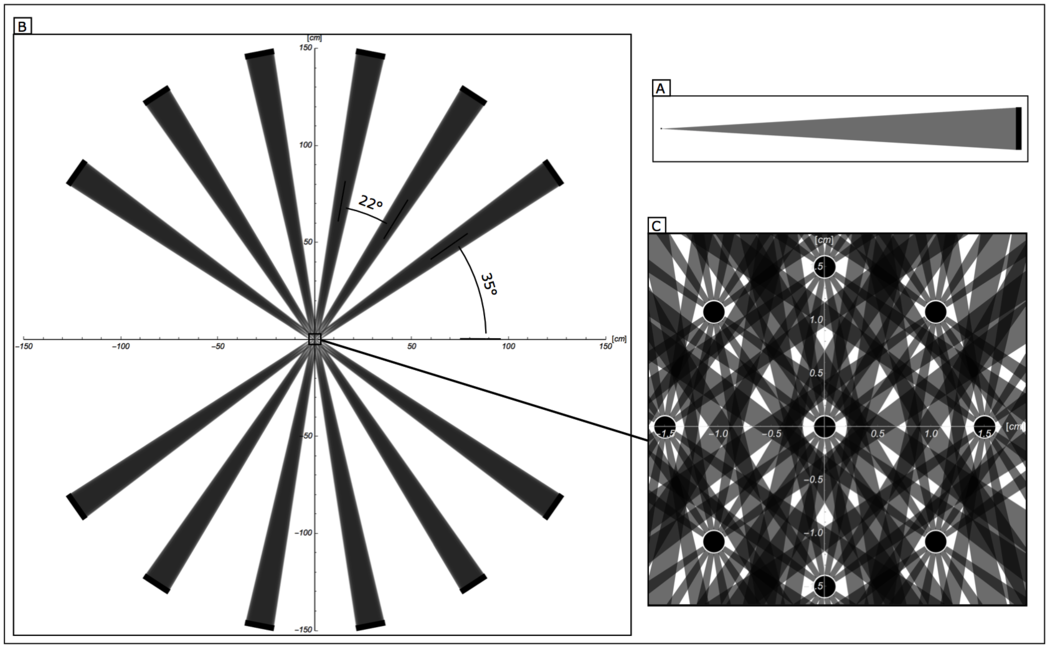Neutron pinball
The Simulation
Photons with a Bremsstrahlung energy distribution are incident upon 64 thorium cylindrical targets. All thorium targets have 1 cm center-to-center spacing, a dia. of 0.4 cm, and a height of 8 cm. The target geometry is shown in the neutron flux plot below. The targets are surrounded by a cylindrical room filled with air, which has a radius equal to the distance between the target and the detectors (150 cm), and a height equal to the vertical extent of the detectors (76 cm). Upon the creation of a neutron from photofission, its initial direction of travel is logged. Once the neutron exits the cylindrical room, its direction of travel as seen by a detector placed room's edge, is compared to it's initial direction of travel, giving a neutron deflection angle.
Results
12% of neutrons scattered in the thorium cylinders alone, and 14% scattered when air was included. The histogram below reveals that if a neutron did scatter, it most likely did so at an unacceptable angle. Neutrons that didn't undergo any interaction are not included in this plot.
Effect of room air
About 2% of neutrons were scattered in the air. Below is a histogram of neutron deflection angles when neutron-thorium interaction was turned off. Neutrons that didn't undergo any interaction are not included in this plot.
Octagonal target placement
The geometry shown below provides an unobstructed line of sight from every target, to the entire face of every detector. The cylindrical targets have a diameter of 2 mm. A target is placed at each of the eight vertices of an octagon with a radius of 1.5 cm, along with a target at the center. When using thorium as the target material, 3.2% of neutrons were deflected from within the cylinders.
Go back Elastic scattering



